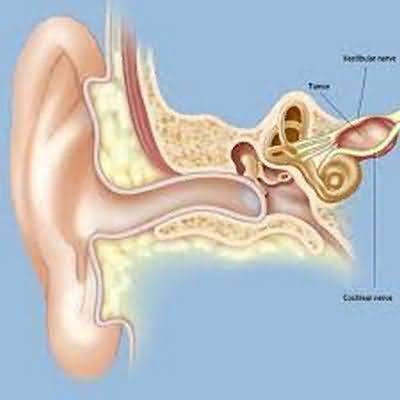vocal fold paralysis
vocal fold paralysis
Vocal fold paralysis can result from a lesion or damage to either the vagus or recurrent laryngeal nerve and usually results in breathy dysphonia and effortful voicing
Common causes of unilateral recurrent laryngeal nerve involvement include thyroid surgery (and occasionally thyroid cancer), other neck surgery (anterior discectomy and carotid endarterectomy), and mediastinal or apical involvement by lung cancer
Skull base tumors often involve or abut upon lower cranial nerves and may affect the vagus nerve directly, or the vagus nerve may be damaged during surgical management of the lesion
While iatrogenic injury is the most common cause of unilateral vocal fold paralysis, the second most common cause is idiopathic
However, before deciding whether the paralysis is due to iatrogenic injury or is idiopathic, the clinician must exclude other causes, such as malignancy
In the absence of other cranial neuropathies, a CT scan with contrast from the skull base to the aorto-pulmonary window (the span of the recurrent laryngeal nerve) should be performed
If other cranial nerve deficits or high vagal weakness with palate paralysis is noted, an MRI scan of the brain and brainstem is warranted
Unlike unilateral fold paralysis, bilateral fold paralysis usually causes inspiratory stridor with deep inspiration
If the onset of bilateral fold paralysis is insidious, it may be asymptomatic at rest, and the patient may have a normal voice
However, the acute onset of bilateral vocal fold paralysis with inspiratory stridor at rest should be managed by a specialist immediately in a critical care environment
Causes of bilateral fold paralysis include thyroid surgery, esophageal cancer, and ventricular shunt malfunction
Unilateral or bilateral fold immobility may also be seen in cricoarytenoid arthritis secondary to advanced rheumatoid arthritis, intubation injuries, glottic and subglottic stenosis, and, of course, laryngeal cancer
The goal of intervention is the creation of a safe airway with minimal reduction in voice quality and airway protection from aspiration
A number of fold lateralization procedures for bilateral paralysis have been advocated as a means of removing the tracheotomy tube
Unilateral vocal fold paralysis is occasionally temporary and may take over a year to resolve spontaneously
Surgical management of persistent or irrecoverable symptomatic unilateral vocal fold paralysis has evolved over the last several decades
The primary goal is medialization of the paralyzed fold in order to create a stable platform for vocal fold vibration
Additional goals include advancing diet and improving pulmonary toilet by facilitating cough
Success has been reported for years with injection laryngoplasty using Teflon, Gelfoam, fat, and collagen
Teflon is the only permanent injectable material, but its use is discouraged because of granuloma formation within the vocal folds of some patients
Temporary injectable materials, such as collagen or fat, provide excellent temporary restoration of voice and can be placed under local or general anesthesia
Once the paralysis is determined to be permanent, formal medialization thyroplasty may be performed by creating a small window in the thyroid cartilage and placing an implant between the thyroarytenoid muscle and inner table of the thyroid cartilage
This procedure moves the vocal fold medially and creates a stable platform for bilateral, symmetric mucosal vibration

















